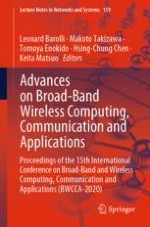This book aims to provide the latest research findings, innovative research results, methods and development techniques from both theoretical and practical perspectives related to the emerging areas of broadband and wireless computing.
Information networks of today are going through a rapid evolution. Different kinds of networks with different characteristics are emerging, and they are integrating in heterogeneous networks. For these reasons, there are many interconnection problems which may occur at different levels of the hardware and software design of communicating entities and communication networks. These kinds of networks need to manage an increasing usage demand, provide support for a significant number of services, guarantee their QoS, and optimize the network resources.
The success of all-IP networking and wireless technology has changed the ways of living the people around the world. The progress of electronic integration and wireless communications is going to pave the way to offer people the access to the wireless networks on the fly, based on which all electronic devices will be able to exchange the information with each other in ubiquitous way whenever necessary.
